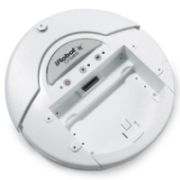What is Computer Science?
Objectives
- Reflect on our George Hart convocation
- Reflect on computing
This assignment must be done individually.
Create a new Microsoft Word or text document named YourUserName-A12.
Computer
Science is no more about computers than astronomy is about
telescopes.
-- Edsger Dijkstra
Did You Know? |
|
| CS in HS | In most US high schools, classes with the name "computer science" are not considered science classes, but are part of the vocational educational track. |
| Not For NCAA | The general level of high school "CS" classes is so academically weak that several years ago, the NCAA announced it would stop accepting such classes to meet eligibility requirements |
A new high school Advanced Placement (AP) course in Computer Science is presently under development. The course, tentatively called Computer Science Principles, is a deep, content rich class covering the fundamentals of computing. The goal is to teach student's core computer science knowledge and capabilities. Because of this a task force has identified seven big ideas in computer science which CS experts believe represents that information which is most important for an educated citizen to know and understand.
-
Computing is a creative human activity that engenders innovation and promotes exploration
Creativity and computing are prominent forces in innovation; the innovations enabled by computing have had and will continue to have far-reaching impact. At the same time, computing and computer science facilitate exploration and the creation of knowledge. Emphasizing the creative aspects of computing, students should create interesting and relevant artifacts with the tools and techniques of computing and computer science.
-
Abstraction reduces information and detail to focus on concepts relevant to understanding and solving problems
People use abstraction every day, but it is a central problem-solving technique in computer science. Traditional examples of abstraction in computer science include control and data abstraction in programming languages as well as analyzing and understanding hardware and software systems. Examples of abstractions can be used in modeling the world, in managing complexity, and in communicating with people as well as with machines. Students should learn to work with multiple levels of abstraction while engaging with computational problems and systems.
-
Data and information facilitate the creation of knowledge
Computing enables and empowers new methods of information processing that have led to monumental change across disciplines, from art to business to science. A staggeringly large amount of raw data provides part of the foundation of our information society and economy. People use computers and computation to translate, process, and visualize raw data, creating information. Computation and computer science facilitate and enable a new understanding of data and information that contributes knowledge to the world. Students should work with data using a variety of tools and techniques to better understand the many ways in which data is transformed into information and knowledge.
-
Algorithms are tools for developing and expressing solutions to computational problems.
Algorithms help elementary school students learn to multiply, but algorithms realized in software have affected the world in profound and lasting ways. The development, use, and analysis of algorithms is one of the most fundamental aspects of computing. Students should work with algorithms in many ways: they will develop and express original algorithms, they will implement algorithms in some language, and they will analyze algorithms both analytically and empirically
-
Programming is a creative process that produces computational artifacts
Programming and the creation of software have changed our lives. Programming results in the creation of software, but it facilitates the creation of more general computational artifacts including music, images, visualizations, and more. In this course programming will enable exploration and study as well as being the object of study. Introducing students to the concepts and techniques used in writing programs and to the ways in which programs are developed and used by people; the focus should not be programming per se, but on all aspects of computation. Students should create programs, translating human intention into computational artifacts.
-
Digital devices, systems, and the networks that interconnect them enable and foster computational approaches to solving problems
Digital devices and the Internet have had a profound impact on society. The principles of systems and networks that helped enable the Internet are also critical in the implementation of computational solutions. Computer networks support communication and collaboration. Students should gain insight into how systems and networks operate, to the principles that facilitate their design, and will analyze the effects of systems and networks on people and society.
-
Computing enables innovation in other fields including science, social science, humanities, arts, medicine, engineering business
Computation has changed the way people think, work, live, and play. Our methods for communicating, collaborating, and problem-solving, and doing business have changed and are changing due to innovations enabled by computing. Many innovations in other fields are fostered by advances in computing. Computational approaches lead to new understandings, new discoveries, and new disciplines. Students should become familiar with the many ways in which computing enables innovation in other fields.
